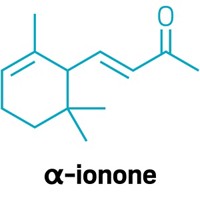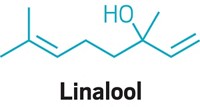Advertisement
Grab your lab coat. Let's get started
Welcome!
Welcome!
Create an account below to get 6 C&EN articles per month, receive newsletters and more - all free.
It seems this is your first time logging in online. Please enter the following information to continue.
As an ACS member you automatically get access to this site. All we need is few more details to create your reading experience.
Not you? Sign in with a different account.
Not you? Sign in with a different account.
ERROR 1
ERROR 1
ERROR 2
ERROR 2
ERROR 2
ERROR 2
ERROR 2
Password and Confirm password must match.
If you have an ACS member number, please enter it here so we can link this account to your membership. (optional)
ERROR 2
ACS values your privacy. By submitting your information, you are gaining access to C&EN and subscribing to our weekly newsletter. We use the information you provide to make your reading experience better, and we will never sell your data to third party members.
Business
Rhodia Invests In Synthetic Sandalwood
French firm’s integration of two manufacturing sites in China should boost competitiveness
by Jean-François Tremblay
March 21, 2011
| A version of this story appeared in
Volume 89, Issue 12
The smell of sandalwood is omnipresent in temples and on streets throughout Asia. As the most common scent in incense sticks, the smell of sandalwood oil conjures the idea of Asia more fittingly than probably any other.

A victim of its popularity, the sandalwood tree has been so overharvested in recent years that the United Nations classifies it as an endangered species. As a result, Rhodia sees growing market opportunities for synthetic sandalwood fragrance chemicals. The French company expects that its environmentally friendly process will find favor among the growing ranks of so-called ethical buyers in Asia and the rest of the world.
“Demand for sandalwood is growing at a time when it’s protected worldwide against overexploitation,” says Olivier Champault, the Shanghai-based general manager of Rhodia’s aroma performance business in Asia. “Our synthetic product preserves a natural resource, is environmentally friendly, and its performance is nearly identical to the natural product.” Besides being a popular scent for incense, sandalwood is used as an aroma in soaps.
Rhodia is the world’s largest producer of isobornyl cyclohexanol (IBCH), the main ingredient in synthetic sandalwood fragrance. It manufactures the ingredient in China, where the firm is in the process of dismantling its plant in Wuxi, in Jiangsu province, and moving the equipment to Zhenjiang, about 100 miles away. Although government mandated, the move will allow Rhodia to increase production capacity for IBCH and integrate the operation with a key raw materials facility.
Companies that buy fragrance ingredients usually seek out natural products because they tend to be preferred by customers, industry insiders say. But in the case of sandalwood, it may be unethical to use the natural material.
“It’s more and more questioned that using the product that comes from a natural source is best,” says Peter Wullschleger, head of media relations at the Swiss flavors and fragrances formulator Givaudan. “If you’re sourcing sandalwood from places where they don’t replant, synthetic is probably the better way.” Givaudan operates a sandalwood plantation in Australia, but the world’s biggest source of sandalwood remains India.
“Natural is most desirable, but there’s no supply,” says John C. Leffingwell, president of the food and flavor consultancy Leffingwell & Associates. He notes that Givaudan’s Australian plantation is not delivering much product yet. On the spot market, Leffingwell says, natural sandalwood oil from India currently sells for $2,300 per kg, when it’s available. “The most you can buy at one time is probably 15 kg.”
Both for the natural and the synthetic aroma ingredients, environmental and sustainability concerns among commercial sandalwood buyers have been growing, Leffingwell adds. “Major buyers will make sure that their suppliers of synthetic sandalwood are not polluting.”
To make IBCH in its Chinese operations, Rhodia processes phenol to produce hydroquinone and pyrocatechol via hydroxylation. Pyrocatechol is converted into guaiacol, which is further processed to yield IBCH and vanillin, better known as artificial vanilla.
Guaiacol is itself a commercial product, Champault notes, and Rhodia’s Chinese output is also being moved from Wuxi to Zhenjiang. He reckons that annual worldwide demand for guaiacol produced from pyrocatechol approaches 12,000 metric tons. About 3,000 metric tons is used to make the expectorant guaifenesin, 1,000 metric tons is used for IBCH, and 8,000 metric tons for vanillin.
Some Chinese companies obtain guaiacol by starting with o-nitrochlorobenzene instead of pyrocatechol. Global demand for such guaiacol stands at about 9,000 metric tons annually, Champault says. However, he claims that Rhodia’s pyrocatechol process is far cleaner because it does not generate toxic waste, consumes half the quantity of water, and emits 95% fewer nitrogen oxides and 99% less salt.
Rhodia is moving its IBCH and guaiacol facilities out of Wuxi because the local government is repossessing some of the land allocated to the firm, Champault says. It’s a problem that is affecting many industrial producers in China. For example, the pharmaceutical ingredients producer ScinoPharm has closed its site in Kunshan and relocated to Changshu for similar reasons.
Rhodia will realize some operational advantages from the relocation. Consolidation will reduce costs through simplified administration and better utilization of common utilities such as steam and water treatment, says Claude Mercier, business development director for Rhodia’s aroma business. Champault points out that Rhodia will no longer need to ship pyrocatechol 100 miles from Zhenjiang to Wuxi.
Physically moving facilities from one site to another is a significant undertaking that Rhodia has never tried before, Champault acknowledges. Yet it was an easy decision because the guaiacol and IBCH plants in Wuxi are only nine and five years old, respectively.
The relocated guaiacol unit will likely start production next month, and the relocated, expanded IBCH plant will come on-line in July, Rhodia expects. “It’s like a giant puzzle, not unlike trying to move an Egyptian pyramid,” Champault says. “But unlike in a pyramid, our parts have to actually still work together for the purpose of producing something after being reassembled.”






Join the conversation
Contact the reporter
Submit a Letter to the Editor for publication
Engage with us on Twitter